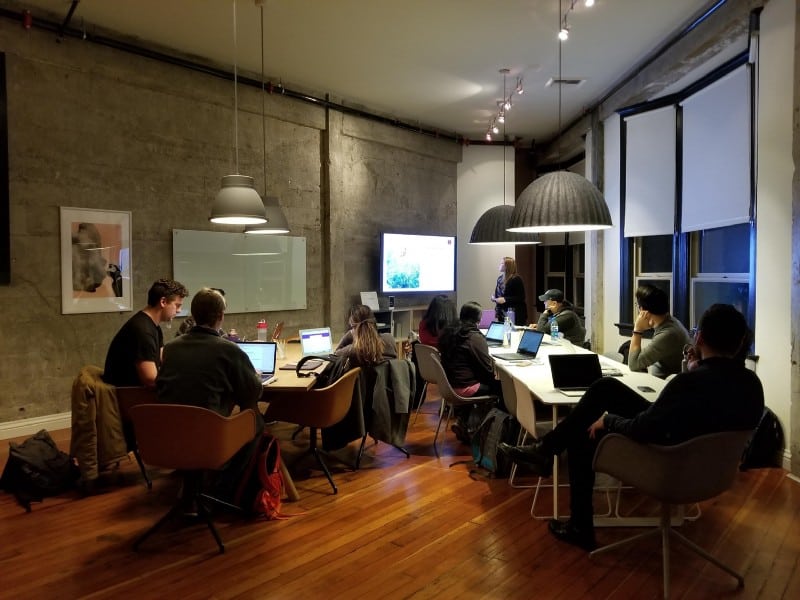Seven tips for more effective, more productive meetings.
Meetings are important. We need them. They get things done; they make things happen. But when not properly executed, they can be a big waste of time, resources, and money. 71% of 182 surveyed senior managers reported meetings are unproductive and inefficient. About $37 billion is lost annually to unproductive meetings. Yikes! Those are some serious numbers. So how do we make meetings worth a company’s time and money?

First and foremost, it is imperative to evaluate the meetings you currently hold. What is your meeting structure like? When’s the last time you evaluated it and adjusted it to maximize productivity? We can find ourselves in an autopilot mode, going through the motions.
But when you stop to consider the necessity of the meetings held, you may find that you don’t need some after all. That daily, weekly, or monthly meeting that auto-fills on your calendar has it outlived its usefulness? Before you set up the meeting, ask yourself, “Is it really necessary?”
How Long Should My Meeting Be?
The first step in running a successful meeting is adequately planning for one. The length of the session is a crucial factor to consider for group retention and participation. What’s the ideal length of a meeting? Look no further than TED talks for the answer. Every single TED talk, no matter if Bill Gates or Tony Robbins is on the stage, is no longer than 18 minutes. This is by design. Research shows that the optimum amount of time to hold people’s attention span and ensure the information sticks in their memory is 10 to 18 minutes.
“It [18 minutes] is long enough to be serious and short enough to hold people’s attention,” TED curator Chris Anderson said. “The 18-minute length also works much like the way Twitter forces people to be disciplined in what they write. By forcing speakers who are used to going on for 45 minutes to bring it down to 18, you get them to think about what they want to say. What is the key point they want to communicate? It has a clarifying effect. It brings discipline.”

A lot can happen in 18 minutes. John Kennedy inspired a nation in 15 minutes with his speech about going to the moon. Martin Luther King Jr. shared his dream of racial equality with the world in 17 minutes. You can undoubtedly pitch your next idea within that time and have more confidence knowing some of the world’s most exceptional leaders made significant impact and change in a short window.
Sometimes, though, longer meetings are necessary, in which case it is recommended to hold them no longer than 60 minutes. Research shows that focus and attention span significantly decreases after 30 minutes: from the start of a meeting to the half-hour mark, about 84% of people will still be engaged; attention span decreases to 64% by 45 minutes.
Once you have determined an optimal time length with careful consideration, it’s time to plan your meeting.

7 Effective Meeting Strategies
The following strategies will help make your meetings more profitable and enjoyable for the company at large:
1. Clearly identify the purpose
There should always be a tangible objective for every meeting held. Don’t waste your time or anyone else’s discussing a topic that’s no longer relevant or trying to solve a problem that’s not clearly defined yet. First, identify the purpose. Is the information you want to share enough to hold a meeting? If the desire is to give a “status update” or to check-in with your team, an email or desk drop-by may be a better option.
Ask yourself what you want to accomplish. Are you wanting to seek input on a decision that needs to be made or a problem that the company is facing? Do you need to alert your team about a change in company structure or dynamic? Clearly pinpoint your objective and make it worth everyone’s time to share it before you schedule a meeting.
2. Strategically invite attendees
Identifying your objective will also help you to evaluate who needs to be in attendance. When people don’t feel that the information being discussed pertains to them or that they don’t have the skill set to contribute actively, they’re more likely to think that the meeting is a waste of their time.
But when you are intentional about who you invite, you set the team up for the most success.
Only invite the people who will be directly affected by the message you wish to deliver or who can contribute to solving the problem. It can be of habit to invite everyone. But when you are intentional about who you invite, you set the team up for the most success.
3. Follow your agenda
One of the most crucial aspects of a productive meeting is planning. Create a full-flushed agenda from the start and end time to all of the happenings in between. This will keep you focused on the objective and make every minute count. What kind of activities and methodology will best support your desired goal? Will you benefit from a more open or organized discussion? What resources will you need? How should the environment of the meeting space be?
Once you have all of your ducks in a row, time out the schedule so that you know what needs to happen when. Then display the agenda during the meeting for people to see–perhaps on a projector, whiteboard, or individual printouts. People will be more focused and involved when they know what to expect, and everyone in the room will be encouraged to stay on task.
4. Establish ground rules
Start the meeting by communicating the ground rules. Briefly go over the set agenda, including activities or discussions that will take place, any scheduled breaks, and the end time. This way, everyone has the same understanding of what to expect, and the meeting can run more smoothly. Remind the group that it is imperative to respect the opinions of everyone in the room, even if they happen to disagree with them.
Establish that the room is a safe space to share and be heard by others. With that being said, don’t allow anyone person to monopolize the conversation. Encourage quiet attendees to share their insights and kindly tell oversharers that they’re opinion is valued, but you need to gather other perspectives before making a decision. Pay close attention that conversation can flow freely around the room.

5. Stick to the schedule
Start and end on time. It’s that simple. If you expect people to show up on time and not leave early, give them the same courtesy. You build a reputation for being prompt and professional when you uphold your schedule. Attendees will also trust that you are true to your word–they won’t fear that meetings will run excessively long, for example, and can plan accordingly with ease.
You build a reputation for being prompt and professional when you uphold your schedule.
6. No roam zone
Unless you find it necessary for your objective, do not allow attendees to bring their devices–laptops, iPads, cellphones, etc.–to the meeting. Outside technology will likely be a distraction if it will not enhance the meeting’s purpose. The group will be more likely to engage in the discussion and activities planned instead of surfing the web or scrolling through social media.
Plus, because you’ve taken the necessary steps to trim the fat and fine-tune the focus of your meeting, they won’t feel the need to entertain themselves from a dull and seemingly pointless gathering!

7. Circle back
One of the best ways to make sure the group has retained the meeting information and is following through with necessary action steps is to follow up with them post-meeting. Within 24 hours after the meeting, send out an email with meeting highlights, including required tasks that need to be completed, deadlines, and responsibilities given to specific people. Doing so will clear up any uncertainty that may exist and ensure that everyone is on the same page.
Meetings can be productive and invaluable. You only need to take the necessary steps and implement effective strategies to make them successful.
Still need help building a better meeting? Bring in a professional facilitator from Voltage Control.
Voltage Control designs and facilitates innovation training, Design Sprints, and design thinking workshops. Please reach out to us at info@voltagecontrol.com if you want to talk.


